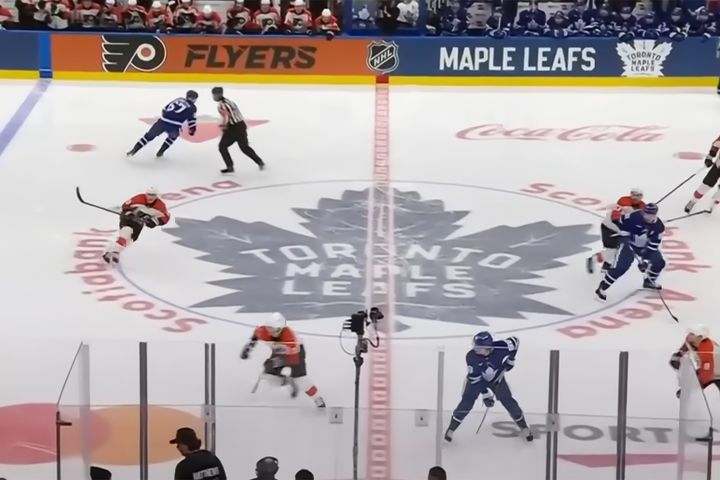
Toronto Maple Leafs rookie keeps crashing fan interviews
Toronto Maple Leafs rookie Nikita Grebenkin isn't exactly the biggest star in town, but he's still getting swarmed on the streets by a diehard group of fans."
Grebenkin, a 21-year-old from Russia, originally joined the franchise two years ago as a fifth-round draft pick.
And while he mostly flew under the radar in his first few years in the organization, he's now played five games for the most-watched hockey team in the world.
After Grebenkin's second NHL game against Utah on November 24, he was stopped by the Fan First Network, an independent media channel that's created a fair bit of buzz over the past few years.
And while many players in the NHL sneak out of the arena through underground entrances, Grebenkin — who was apparently on his way to catch a cab — was happy to chat with the channel for a few minutes.
BACKCHECK FORECHECK PAYCHEQUE BABY. Nikita Grebenkin is an absolute legend for stopping to chat with us after tonight's W. Grebs forever. #LeafsForever #nhl pic.twitter.com/d2nFHIAE8w
— Fan First Network (@fanfirstnetwork) November 25, 2024
"A win today… it's [a] paycheque," Grebenkin said with a laugh, likely referencing the "forecheck, backcheck, paycheque" phrase repeated by hockey players of all ages.
After the Leafs won last night against the Chicago Blackhawks, Grebenkin made another surprise appearance on the network. On his way out of Scotiabank Arena, Grebenkin was spotted by the hosts once again.
WORK SLEEP WORK, GO LEAFS GO. NIKITA GREBENKIN RETURNS FOR ANOTHER ELECTRIC INTERVIEW. GREBA YOU BEAUTY. #LeafsForever pic.twitter.com/puGKH8XY2I
— Fan First Network (@fanfirstnetwork) December 3, 2024
"Work, sleep, work… Go Leafs go, yeah?" Grebenkin told the hosts to a big cheer.
Grebenkin then was asked if the 4-1 win equalled another paycheque.
"Paycheque today, Papi [Auston Matthews] back, [he scored]," Grebenkin added, before mimicking his teammate's moves to yet another big cheer.
"I enjoy speaking with you!" Grebenkin said, before getting a few cheers on his way into another cab.
While the day might come when Grebenkin no longer wants to stop and chat with YouTube channels outside of the arena, he definitely appears to be making the most of his first few months in Toronto.
Fan First Network
Latest Videos
Latest Videos
Join the conversation Load comments







